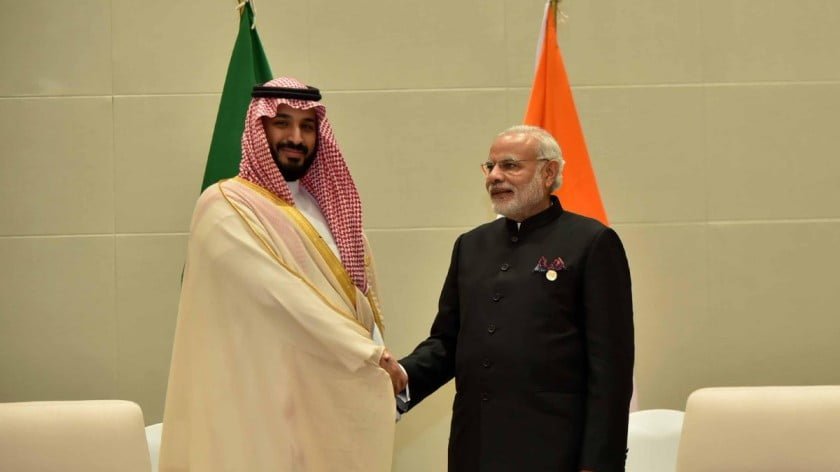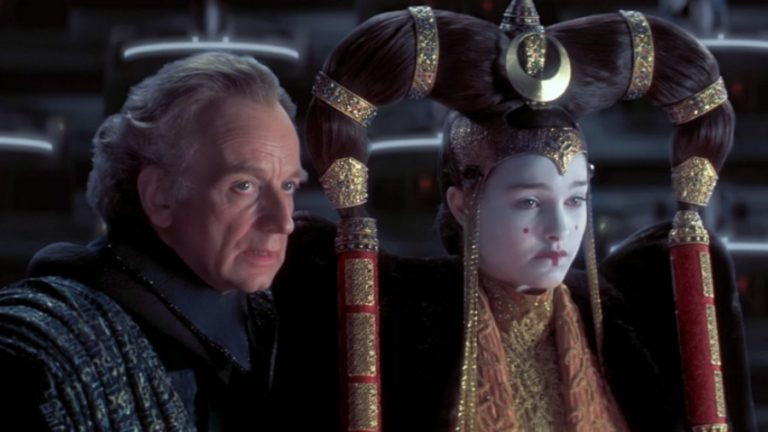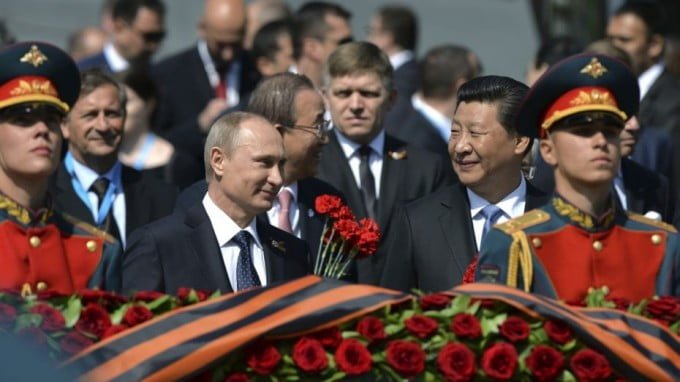Trump’s “Space Force” Is About to Take Off in a Huge Way. Strategic Threat to Russia and China
Popularly derided by critics from the Mainstream and Alternative Medias as a delusional dream of a megalomaniac president, Trump’s Space Force is actually an initiative to be reckoned with and poses the highest degree of strategic threat to Russia and China.
Most of the world mocked Trump after he proposed the creation of a US Space Force earlier this year, but this idea isn’t a laughing matter for Russia and China, who stand to have their existing strategic edge over America undercut by Washington’s efforts to neutralize their game-changing hypersonic missile capabilities through a combination of space-based sensors and interceptors.
General John Hyten– the commander of US Strategic Command and therefore the country’s most important point man for nuclear warfare – and General Samuel Greaves – the Missile Defense Agency Director – both spoke at the Space and Missile Defense Symposium on Wednesday about the need to concentrate on improving the US’ military capabilities in space.
Some of the highlights of Hyten’s speech are as follows:
“The most important thing to do in the missile defense business is making sure you can see and characterize the threat. If you can’t see and characterize the threat, I don’t care what kind of shooter you have, there is nothing you can do about it. So the most important thing is, you look at all the threats that are coming together, hypersonics, etc., is that we have to be able to see that threat.
…
If you can see it early, you can kill it early. Driving that equation to the left has huge operational advantages because to actually shoot down a missile that somebody launched that comes back down on their head, do you think they are going to shoot another one? I don’t think so. They are not going to shoot another one because it’s just going to come right back down on their head and so they stop shooting. Isn’t that the whole point?
…
There is not enough islands in the worlds to build radars on to see all the threats and be able to characterize the threats. You just can’t get there from here, so the only place to go and do that is a place where the U.S. is actually strongest and technology is there to do it and that is into space. We have to go into space.”
Greaves’ speech was more technical but the prime takeaway is that he talked about DARPA’s “Blackjack” program as a pertinent solution to the US’ space sensor needs. This secret project seeks to create a constellation of satellites in low Earth orbit that Space News described as “providing global persistent coverage for military operations” and “replacing existing constellations that could be targeted by enemies with more resilient systems that would be easier to reconstitute if they came under electronic or kinetic attack.”
In other words, the Pentagon wants to apply the theoretical basics of network-centric warfare to space warfare in order to maximize the US military’s physical and operational resilience in this domain.
It’s not just all about defense like Greaves would make it seem, however, since Hyten’s forward-looking vision that the US could one day “actually shoot down a missile that somebody launched that comes back down on their head” insinuates that the “Blackjack” constellation will have offensive capabilities as well.
While scant details have been revealed about the shadowy Space Force, a few important points can be extrapolated upon in order to get a better idea of how this forthcoming branch of the US Armed Forces will operate. The publicly acknowledged “Blackjack” satellites would clearly be used to detect hypersonic missile launches, while the secretive X-37B will probably be tasked with intercepting them.
Not much is known about the X-37B but a lot has been speculated about it, including its possible role as the vanguard vehicle for executing the US’ “Prompt Global Strike” (PGS) strategy that aims to hit any place on the planet within 30–60 minutes of the decision being made.
It’s therefore conceivable that Hyten had this weapon in mind when he spoke about his dream of the US being able to “actually shoot down a missile that somebody launched that comes back down on their head”, seeing as how it could be paired with the “Blackjack” constellation to give it the “eyes” and “ears” that it needs in order to do this impressive feat.
For as solid of a strategy as it may sound, the weakness in Trump’s Space Force is that it’s vulnerable to anti-satellite weapons (ASAT), cyberwarfare (hacking), and electronic warfare.
While the latter two can’t exactly be countered through any physical means, the first countermeasure could be thwarted through the deployment of tiny X-37B-like drones (possibly stored in a X-37B or other kind of “mothership”) to intercept ASATs that are targeting the US’ launch vehicles or sensor systems, resorting to “swarming” techniques to overwhelm or distract the incoming munition(s). Suffice to say, this would further contribute to the physical militarization of space and lay the basis for the creation of an entire “military ecosystem” there.
Russia and China’s calls for the non-militarization, and inevitably, the demilitarization of space will go unheeded by the US just like their calls against the uncontrolled proliferation of terrestrial anti-missile technology.
Apart from having their hypersonic missile advantage over the US neutralized through the publicly “defensive” purposes of Trump’s Space Force, the Pentagon will probably go a step further and disguise offensive weapons within these platforms just like it’s done by deploying ballistic missiles to its supposedly anti-missile “interceptor” bases. Consequently, a serious security dilemma will develop because Russia and China won’t be able to tell whether an American satellite is part of “Blackjack’s” “defensive” constellation or linked to the X-37B’s offensive capabilities.
As the US takes the first step towards formally militarizing space, it’s also making rapid advancements in hypersonic missile technology after recruiting a spy to steal Russia’s secret plans last month, which could greatly narrow the timeframe for Washington to catch up to Moscow.
Framed another way, the US is ambitiously pioneering anti-hypersonic missile defensive strategies and infrastructure in space concurrent with accelerating its research on the offensive counterpart that Russia has already mastered, which could eventually lead to Washington reversing the dynamic and gaining an edge over Moscow if it unveils a space-based hypersonic missile “shield” while its rival lacks an analogous capability.
It’s for this reason that Russia and China should team up with one another to collectively counter the threat being posed by Trump’s Space Force, as the two complementary engines of the emerging Multipolar World Order could see their shared world-changing vision stopped dead in its tracks if the US regains the strategic military superiority that it just recently lost by deploying its own hypersonic missile system and space-based “shield” in the next decade that could then put it in a position to blackmail both of them.
The future of the world is therefore likely to be determined in the outer space battlefields above it, with the Great Power or coalition thereof that’s in control of this domain being the one that gets to most powerfully shape it.







